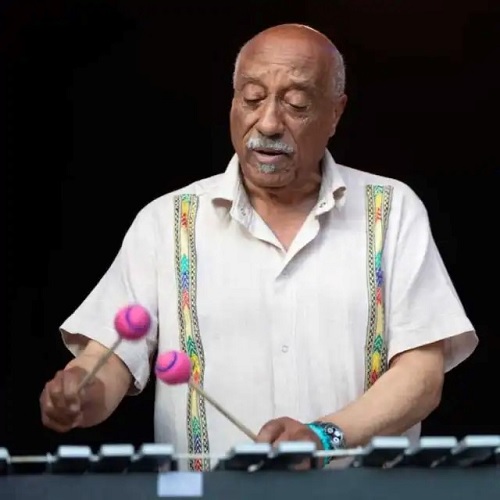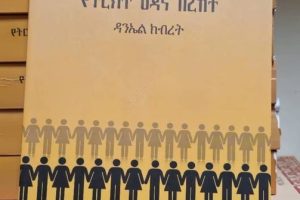
Since childhood, I have loved music very much. I remember I did not only sing music dance whenever fascinated by something. At every opportunity I faced, I picked up a contextual song and sang it till I realized it. Though the content or the arrangement is not appropriate for the issues I was going through, I simply mimicked the melody for some minutes and then my mood got altered and revived from that situation.
These days, I am highly impressed by Tibetan classical and Eritrean music. I don’t know the languages and cultures of these people. But I sense the meaning, and I simply try to catch and rehearse some words. But more than anything I am highly impressed by the melody and the lyrics of the music composition. The humor and diction structure, the lyric, the melody and the rhythm of the arrangement had given me some meaning which I loved most. Since I didn’t know the meaning of the songs, I heard them each day anew. Again, since I didn’t know the lexical meaning of the songs, I feel very free to connect the composition with any of my personal experiences. Because of the lyric that sounds humid, I revert to the equivalent experience. The slow beats and cool sounds in the arrangement take me to my calm experiences. The echoing beats and louder sounds force me to move my body as per their motion. Whenever I watched the clip of this music the stories presented there are not far from my culture and personal experience. We all are humans. We had many commonalities to be shared.
In a given music arrangement, there are lots of components that collectively make a work. The musical instruments, the melody, the lyrics, and the beats that resonate together are like the heartbeat. Thus, these compositions had the efficacy of keeping the rhythm of our souls.
The personal experiences that I have raised above are not reflected in my life only. It is seen that in a given music concert the audiences that are collected together are not those who only speak and hear the language of the musician or the music on the stage. Everyone who heard the composition and watched the artistic wave or dance on the stage is equally fascinated and danced as others did. The melody, the rhythm, the lyrics form the bridge to connect the people with their emotions. When this happens, people can find the best exposure to learn new perspectives, knowledge, experiences, and culture that can matter in their own life and culture too. In this regard, the well-known musician, Fred Johnson, who was approached by BBC journalist, said the following. “Experiences that are not limited by language are great pathways for people to really culturally find new ways to learn each other’s stories and to experience each other. Music is one of those universal languages that bring humanity together.”

Art has been defined by many people on various grounds. But it is a controversial issue that is impossible to come across an agreeable definition. Let me take the definition from the Oxford Dictionary that might better explain the term. “Art is the expression or application of human creative skill and imagination typically in a visual form such as painting or sculpture, producing works to be appreciated primarily for their beauty or emotional power.” As experts in the field said art looks at the world with a critical eye and critics are presented artistically and humorously, thus the message is transmitted with a fascinating impression on the receivers or audiences. Among the various forms music is the leading one.
Music played the greatest role in bringing people of different backgrounds or even those people that are not historically in a good time to come together. The varied experiences and cultures between people make them admire and adore the given music. Naturally, people are more eager to know and experience new things and skills. Fred Johnson had a say in this. “Music helps to bridge a gap in society for people to have a deeper understanding. The things that are different about us are what make the human experience amazing, and the art is just magnificent to exemplify that because it allows us every time to top into the higher level of our humanity and to be reminded of what we can share with others.”
Since the basement of art is the nature and emotion of human beings, the composition itself had the power to link people together. The meaning needed to be implied is another additional value. The coherent flow of each rhythm, the diction of humor, the path of the sounds everything in the given arrangement is powerful enough to control the emotion of any human because any art has its beauty which is meant to humans. The musician said, “We all are created equal. Everybody’s somebody as I like to say it and we need each other so together. It starts with respecting one another and learning about each other appreciating our nuances and putting it all together in this melting pot. This soul dish, if I should call it that, and engaging is beauty. It is a unifier; it has redemptive qualities it puts a smile on your face when you feel like crying.”
Thus, music or art that is created in a given nation does have its own power to touch the emotion and sympathy of nations around the globe. In this context, Jamshed Bharucha, a Neuroscientist at Tufts University, said the following. “People, who grew up in a given culture or being immersed in it can share everything in the given art. But one of the most influential functions of music is to breed or foster social cohesion and get people’s brain states aligned so that they can form a larger community than themselves.”
Since music is made for human beings, the style and composition that is created in a given country is exposed to be modified and rearranged by other nation so as to keep it commonly interesting for the whole people.
Africa is the land of art and music. The nations in the continent had their unique symphony. The continent is the foundation for the immense musical instruments and arrangements that the universe makes use of it. Ethiopia is also the richest country that has more than 80 nations’ cultural and artistic identification.
Nowadays the relevance of our own knowledge and cultural heritages are becoming the sources of advanced and modern living of humankind. Thus, artists in this industry are increasingly digging into the indigenous artistic elements of music in different cultures. The best instance here is Mulatu Astatke. After his remarkable job in fusing Jazz and Latin with traditional Ethiopian music that produced an amazing composition that forced the globe to put its hands on mouth, he got the name The Godfather of Ethio-jazz. He was asked about his say on his creativity. He said, “This is our message to the world. We are developed, we are developing, and we are creating something beautiful. We are promoting our people who have given us so much by creating all these instruments.”
The honorable Doctor Ali Mohammed Birra who was the most prominent singer in Ethiopia also exhibited his performance by fusing Rage and Rock with Oromo culture beautifully this mix allowed the work to be heard and preferred by those who never speak the language.

This generation’s known musician Rophnan is becoming the role model for making the music of Ethiopia to disguise the universal taste. He did research on different Indigenous cultural music arrangements and rhythms and fused them with international ones to bring commonality and improvement. Since he believed in fusion and fashion, he produced his music by mixing the rhythm of traditional Dorze, Gamo, and South Omo people with electronic music.
The conclusion is since art and music did target humanity by their nature digging into the indigenous arrangements and instruments of a given nation and contextualizing it with the universally influencing arrangements is very vital for bringing human beings together. It is a soft and peaceful bridge in which people voluntarily come to one another to share their communal issues as humans. Thus, it is the best and low-cost strategy to bring international consensus and harmony.
BY MEKDES TAYE (PhD)
THE ETHIOPIAN HERALD FRIDAY 22 NOVEMBER 2024



